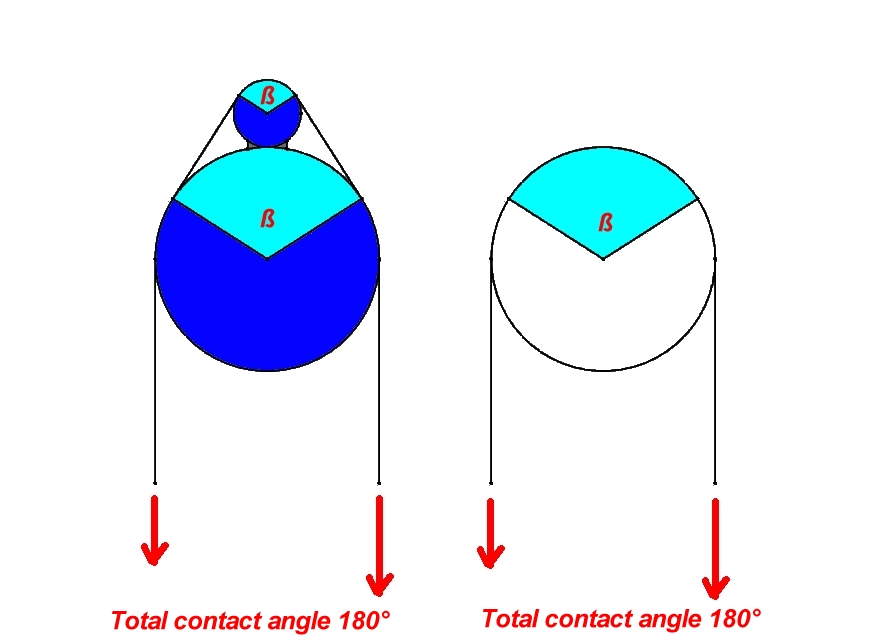For some reason, I am stuck trying to mathematically solve the physics of a riding turn. The calculus of the capstan is pretty simple, but I must be making some mistake trying to come up with the compressive force at the riding turn. Ignoring friction of a rope on itself, the rope should be at maximal tension without slippage when the frictional force equals the hold force of a 360 degree turn. Since the capstan equation is T_load = T_holde^(frictional forceangle of rotation), the frictional force (Normalfrictional_coefficient) should be equal to the hold force to prevent slippage. How would this be described mathematically? Essentially, what is the compressive force at this point? Mathematically, the Normal force should be equal to T_load/(frictional_coefficiente^frictional_coefficient*angle). At equilibrium, what would this be?
Edit, thinking about it, I expect T load would be equal to frictional force (which is the coefficient of frictionnormal) for the loop of suture, since there is no movement. The hold force would not change based on the number of wraps, as it is just the tension needed to prevent slippage of the suture. So mu times normal = T_hold x e^(mutheta). The normal force would be equal to (T_holde^(mu times theta))/mu. So the normal force is proportional to e^(mutheta). Doubling the wrap would increase the normal force by e^(mutheta). One turn is 2 pi radians, so the increase would be e^2pimu. (I had initially said by e, but I forgot that theta’s units should be radians, not revolutions, and forgot the mu).
The importance would be that a clove hutch has two wraps in the same direction whereas the cow hitch has two turns in opposite directions. One would expect that the clove hitch would be tighter.
